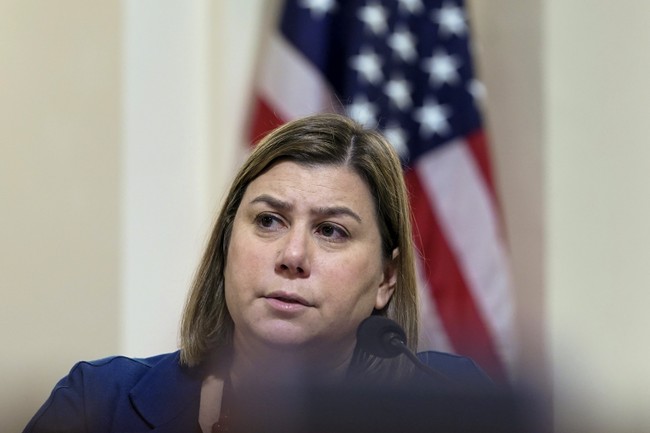This Morning Minute reviews recent political flareups including a controversial video from several Democrat lawmakers urging service members to disobey unspecified “illegal orders,” highlights weekend legal rulings affecting the administration, flags congressional and White House activity for the holiday week, and raises direct questions about who produced and funded the provocative ad and what laws it might implicate.
Monday, November 24, 2025 — the day starts with a short roundup of what’s moving in the halls of power and on the feeds. The newsletter format is punchy: quick takes on trending pieces, a docket of court actions, and a few observations about how political actors are behaving. The immediate spotlight is on a video released by prominent Democrat lawmakers with military and intelligence backgrounds that urged troops to refuse “illegal orders.” The clip made waves precisely because it did not cite any specific orders or situations.
Several op-eds reported reactions and commentary from across the conservative ecosystem, pointing out the danger of normalizing disobedience without clear legal grounds. One commentator noted that the best thing about a recent anti-ICE protest was that it “wasn’t violent. So there is that.” Another pointed to the legal peril of urging resistance when there is no demonstrably unlawful directive to refuse. Those are direct reactions that frame how the Right is interpreting the ad’s intent and effect.
On Capitol Hill, activity is light for the Thanksgiving week as many lawmakers are back in their districts or traveling. There were no major hearings scheduled, and attention turned to Representative Marjorie Taylor Greene’s announced plan to leave Congress in January. The shift in personnel feeds into the broader conversation about intra-party dynamics and how Republicans plan to respond to both policy fights and public messaging from the Left.
At the White House, the First Lady received the official White House Christmas Tree at noon on Monday, and the President was expected to sign an executive order later in the day. The Commerce Department noted Secretary Howard Lutnick’s recent role in a White House ceremony welcoming former hostages, a small but notable piece of diplomatic optics. These lighter items sit alongside the heavier legal and political developments covered below.
There were a number of significant court decisions issued over the weekend that affect the administration and its policies. In Rhode Island, Judge John McConnell Jr. granted plaintiffs’ motion for summary judgment in a case concerning federal workforce reductions and denied the administration’s cross-motion. A Texas redistricting case saw a trial court deny a stay pending appeal, but the Supreme Court later granted an administrative stay in the same matter. These rulings create a patchwork of outcomes and underscore how litigation is shaping national policy.
Other notable judicial moves included a D.C. decision partially granting a preliminary injunction involving the IRS and disclosure questions, and a Northern California order granting a preliminary injunction in a lawsuit about sanctuary policies. The D.C. Circuit handled an expedited removal case with a split outcome on stays, showing the appellate process is actively managing the administration’s requests. The Supreme Court is poised to resume oral arguments next week, and some early-term cases could produce decisions soon.
Back to the video: there are straightforward, consequential questions that ought to be answered about its origin and construction. Who conceived the idea, who funded production and distribution, who wrote the script, and when did this effort begin? Those queries are not rhetorical; they go to motive, coordination, and whether the video was intended to produce a measurable political or military effect.
Beyond funding and authorship, there is a legal question about whether the video crosses lines under the Uniform Code of Military Justice or other statutes or regulations. If the message was engineered to encourage disobedience without citing unlawful orders, critics say it risks instructing service members to take actions that could themselves be illegal. Congressional oversight, some argue, is a reasonable avenue to clarify those risks and to identify responsibility for the messaging.
The reaction cascade has been broad, with many conservative voices calling for answers and accountability. One column bluntly stated, “Democrats haven’t been able to stop President Trump in the courts, they haven’t been able to stop him in the media. So they had to harm the American people,” summarizing a perspective that the video was an escalatory tactic. Others described the six Democrats behind the effort as having “done screwed up. Big time.” Those quotes reflect the tone of the debate and the intensity of the response.
Shifting gears, there’s a lighter note many readers appreciated: the odd little detail of a horse appearing in one of the embedded clips, which drew laughs and attention away from the heavier legal and political discussion for a moment. Small moments like that often become viral pins in the broader media cycle and help shape public perception irrespective of the serious questions raised about the ad.
Finally, the big picture is simple: a controversial political video has generated legal and political fallout, weekend court rulings continue to influence administrative policy, and the holiday calendar has thinned committee activity while elevating personnel stories. Readers are left with concrete investigative questions about the ad’s provenance and intent, and those questions will likely drive further oversight and commentary.
I think my favorite part is the horse in the .





Add comment